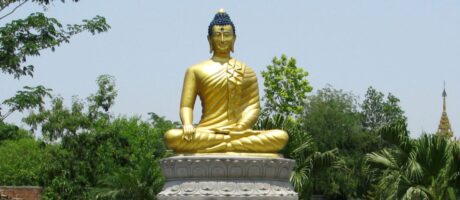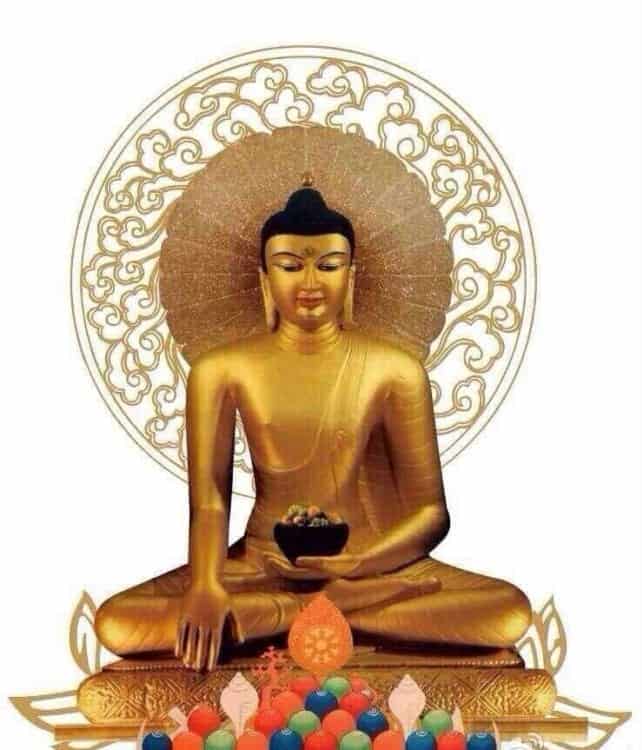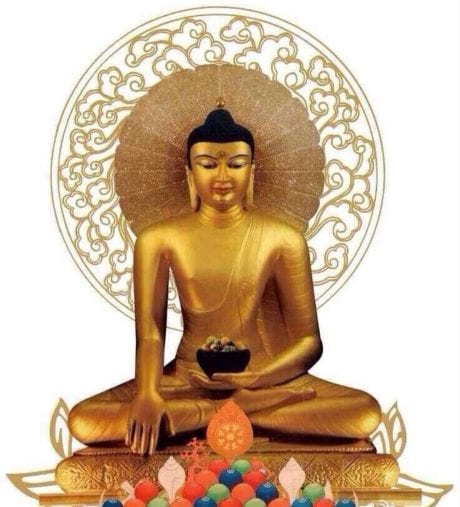Tathāgata: What’s in a Name?
Tathāgata is a Pali and Sanskrit term that is the first of ten epithets for the Buddha.
The ancient Sanskrit thesaurus, the Nāmaliṅgānuśāsanam or Amarakośa Tib. འཆི་མེད་མཛོད་, chi med mdzod, Immortal Treasure) lists a number of epithets or titles for the Buddha:
Omniscient One, Gone to Bliss (Skt. Sugata), Awakened One, King of Dharma, Thus Gone One (Skt. Tathāgata), Always Good, Blessed Lord (Skt. Bhagavan), Victor over Māra, Victor of the World, Victorious One, Possessor of Six Super-Knowledges, Possessor of Ten Strengths, Speaker of Non-Duality, Remover of Obstacles,King of Sages, Full of Glory, Teacher, The Sage, Sage of the Śākyas, Lion of the Śākyas, Accomplisher of All Aims, Son of Śuddhodana, Gautama, Kinsman of the Sun, Son of Māyādevī.[1]
The Buddha frequently referred to himself or described himself as “the Tathāgata” in Pali canonical texts instead of saying “I” or “me”. When he did this, he underlined a distinction marked by his awakening. In the Tibetan language, we translate the term as de bzhin gshegs pa. (phonetic dé zhin shek pa).
Scholars debate the precise translation of this title because it is a compound word that could be broken up in two ways. In English, acknowledging that ambiguity, we translate it as “The Thus Come” or “The Thus Gone”.
Tathāgata: Tibetan Explanation of Etymology
Tridé Songtsen (ཁྲི་ལྡེ་སྲོང་བཙན), better known as Sadnalegs reigned in Tibet in the early 9th century. During his reign, a Tibetan lexicon was compiled entitled the sGra sbyor bam-po gnyis-pa, or the ‘Word-Combination‘. In this work, Tibetan scholars explain the etymology in this way:
As for the word tathāgata, tathā means “thus” (Wylie de bzhin ), and gata means either “come” (Wylie gshegs pa), “departed,” “having understood” or “explained.” The general meaning of the word is connected to how the previous Buddhas came and went, but also how they understood the suchness (Wylie de bzhin nyid (phonetic dé zhin nyi)= Skt. tathatā) of the essence of all moments of existence just as it is, and explained that. However, we fix the well-known previous translation of “Thus Come” (de bzhin gshegs pa).
Titles of the Budddha
The Mahāprajñāpāramitōpadeśa (Mahāprajñāpāramitā-śāstra) attributed to Arya Nāgārjuna includes a chapter explaining the titles of the Buddha. In that chapter, we learn that
1) He preaches the natures of the Dharmas (dharmalakṣaṇa) in the way (tathā) that he has understood (gata) them.
2) In the way that the previous Buddhas have gone by the path of safety (yogakṣema-mārga), thus (tathā) the actual Buddha is going (gata) and will not go on to new existences (punarbhāva).
Ten Powers of a Tathāgata (dasa tathāgatabalāni)

Buddhas have also, of course, achieved the state of an arhat or “foe destroyer”, as have many of their disciples. In addition to that realization, a tathāgata also is foremost because a Buddha discovers and then teaches the path. Moreover, a tathāgata demonstrates ten powers.
These are:
- Power over life (Tib. ཚེ་ལ་དབང་བ་, tsé la wangwa)
- Power over mind (Tib. སེམས་ལ་དབང་བ་, sem la wangwa )
- Power over material things (Tib. ཡོ་བྱད་ལ་དབང་བ་, yojé la wangwa)
- Power over action (Tib. ལས་ལ་དབང་བ་, lé la wangwa)
- Power over birth (Tib. སྐྱེ་བ་ལ་དབང་བ་, kyewa la wangwa )
- Power over aspirations (Tib. མོས་པ་ལ་དབང་བ་, möpa la wangwa)
- Power over prayer (Tib.་སྨོན་ལམ་ལ་དབང་བ་, mönlam la wangwa)
- Power over miracles (Tib. རྫུ་འཕྲུལ་ལ་དབང་བ་, dzutrul la wangwa)
- Power over wisdom (Tib. ཡེ་ཤེས་ལ་དབང་བ་, yeshe la wangwa)
- Power over Dharma (Tib. ཆོས་ལ་དབང་བ་, chö la wangwa)











Responses